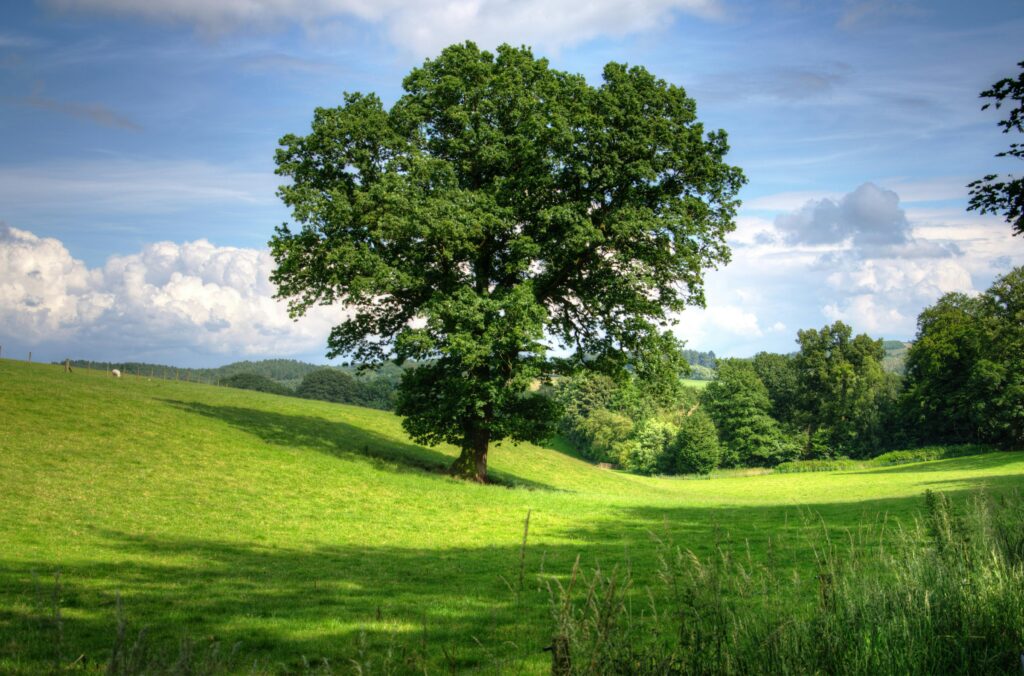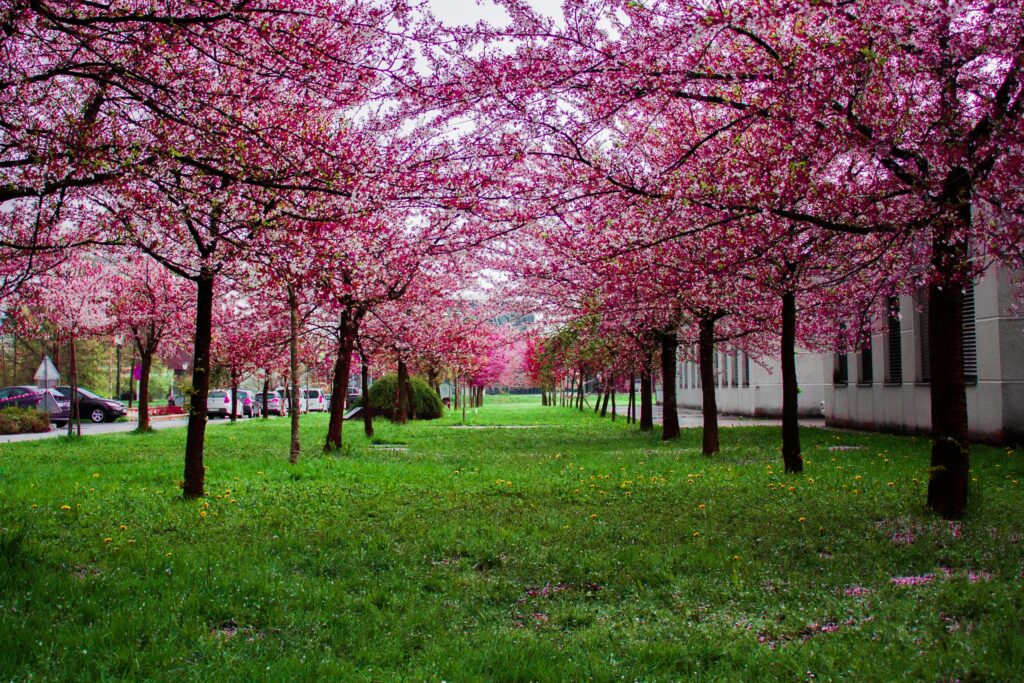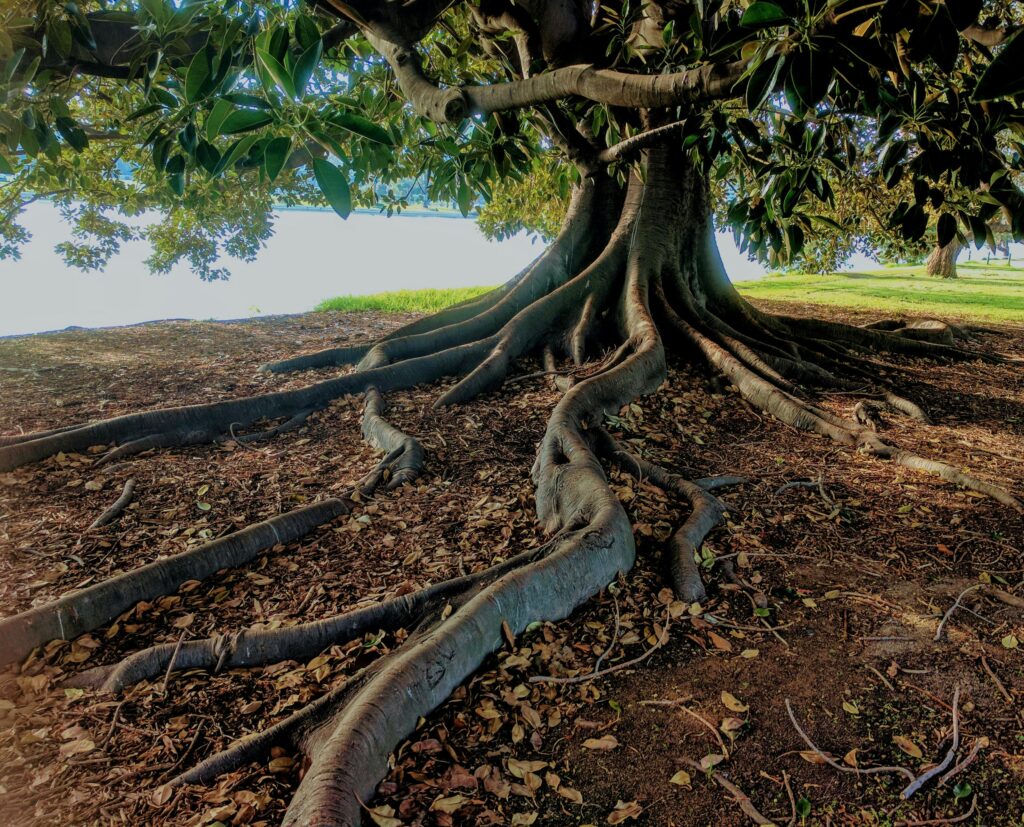
Throughout history, trees have stood as silent witnesses to the unfolding of human life, weathering the ages with steadfast grace. From ancient folklore to modern-day rituals, trees have captivated the spiritual imagination of countless cultures around the world. But what makes trees so spiritually profound? Their silent strength, their connection to nature, and their perpetual cycles all reflect aspects of our lives and our souls.
Like cats, there can be various spiritual meanings and significances attached to trees as well. In this article, we’ll explore eight surprising spiritual meanings of trees and why these majestic beings are more than just part of the landscape. They’re emblems of life, growth, and transformation, carrying symbolic messages that can deepen our understanding of ourselves and the world around us. We will also cover some significances of different types of trees such as the oak and the birch.
Why Trees Hold Deep Spiritual Meaning
Trees play a crucial role in sustaining life by providing oxygen, shelter, and resources, which makes them symbols of support and sustenance. But beyond their physical attributes, trees carry deeper spiritual meanings, embodying life’s most important lessons and truths. As one of the earliest forms of life on the planet, there are a lot of spiritual meanings of trees that are entrenched into our civilizations, cultures, and spiritual lore. Below are some important spiritual meanings of trees.
8 Spiritual Meanings of Trees

Symbol of Life and Growth: Trees are a powerful reminder of personal growth. Watching a tree grow is like witnessing the unfolding of our potential. Trees remind us to stay rooted yet reach for greater heights, to evolve, and embrace the journey of self-discovery.
Representation of Strength and Resilience: Trees endure seasons, each one requiring adaptation. This resilience reflects the human spirit’s ability to persevere and adapt, teaching us that while circumstances may change, our core strength remains intact.
Symbol of Connection to the Divine: Many believe that trees act as messengers of the divine, especially in cultures that worship nature. Trees are seen as symbols of communication between us and the spiritual forces, guiding us toward a deeper connection with nature and the universe.
Symbol of Wisdom: In religious texts and mythologies worldwide, trees are symbols of wisdom. From the Tree of Knowledge in the Bible to the Bodhi tree in Buddhism, they signify the pursuit of wisdom and enlightenment. Observing trees teaches patience and attentiveness. Their slow growth and steady presence remind us to take life at a pace that allows learning, reflection, and understanding.
Representation of Balance and Harmony: A tree’s balance between roots and branches, growth, and decay reflects the harmony of life. Spiritually, this inspires us to seek balance between various aspects of our lives—work and play, mind and soul, giving and receiving. Trees provide balance within ecosystems, supporting various life forms. This interdependence teaches us about harmony and the interconnectedness of all life.
Guide for Inner Peace and Meditation: The serenity of a forest often brings a sense of calm and inner peace. Many people find that spending time among trees naturally encourages mindfulness and a meditative state, helping them reconnect with themselves. Trees encourage us to live in the present moment. By observing a tree’s stillness and subtle movement, we can learn to find peace within and embrace a slower, more mindful approach to life.
Historical and Cultural Significance: From Celtic groves to ancient Indian sacred fig trees, various cultures have held ceremonies under trees, viewing them as sacred meeting places. Trees are deeply woven into the spiritual fabric of numerous rituals and ceremonies. Today, people engage in forest bathing, meditative walks, and even tree-hugging as ways to reconnect with nature. These practices are not just about physical well-being; they are also ways of spiritually grounding oneself and finding solace in nature.
Symbol of Birth and Renewal: Trees shed their leaves in fall only to bloom again in spring, a powerful symbol of rebirth. This process reflects the cycles of life and death, teaching us to let go of the old to make way for new growth and transformation. In our personal lives, embracing change can be challenging. Trees show us that change is natural and necessary for growth, offering reassurance that new beginnings often come after letting go.
Different Trees and Different Meanings
Trees have long held symbolic significance across cultures and traditions. Each species embodies unique qualities, drawing from its characteristics, habitat, and the historical context of its use by humans. We have compiled a list of different spiritual meanings of trees for different species below for your reference.
1. The Oak: Strength and Endurance

The oak tree is often celebrated as a symbol of strength, stability, and endurance. Known for its robust structure and longevity, the oak has become a potent emblem in many cultures. In Celtic mythology, the oak is considered sacred, representing the strength of the earth and the wisdom of the ancestors. Its deep roots signify a connection to the past, while its towering branches reach towards the heavens, bridging the earth and the divine.
Spiritual Significance: The oak encourages us to remain steadfast in our beliefs and to nurture our inner strength. It serves as a reminder to stand tall during life’s storms, emphasizing resilience and unwavering commitment.
2. The Willow: Flexibility and Intuition

The willow tree, with its graceful, sweeping branches, embodies flexibility and intuition. Its ability to bend without breaking symbolizes adaptability in the face of life’s challenges. In various cultures, the willow is associated with emotions, particularly in connection to grief and healing. Its presence often evokes a sense of calm and introspection.
Spiritual Significance: Willows encourage us to embrace change and go with the flow, reminding us that strength can be found in flexibility. They inspire introspection, guiding us to trust our instincts and navigate emotional landscapes with grace.
3. The Pine: Resilience and Longevity

Pine trees are celebrated for their resilience and ability to thrive in harsh conditions. Their evergreen nature symbolizes eternal life and hope. In many traditions, pines are associated with clarity of thought and purification, as their fresh scent is believed to cleanse the spirit and invigorate the mind.
Spiritual Significance: The pine inspires us to remain resilient in adversity, reminding us that life persists even in challenging times. It encourages us to seek clarity and peace amid chaos, grounding us in the present moment.
4. The Cherry Blossom: Beauty and Transience

Cherry blossom trees, particularly in Japanese culture, symbolize the fleeting nature of life. The blossoms are celebrated for their beauty but also for their brief lifespan, which serves as a poignant reminder of the impermanence of all things. This duality invites reflection on life’s transitory nature, urging us to appreciate beauty in the moment.
Spiritual Significance: The cherry blossom inspires us to embrace the present and savor life’s fleeting moments. It teaches us to find beauty in impermanence and to celebrate the cycles of life.
5. The Birch: New Beginnings and Renewal

The birch tree, often one of the first to grow in disturbed areas, symbolizes new beginnings and renewal. Its white bark stands out, representing purity and the promise of fresh starts. In various traditions, birch is associated with protection and healing, often used in rituals to invoke cleansing and transformation.
Spiritual Significance: Birch trees encourage us to let go of the past and embrace new opportunities. They remind us that change can lead to growth and that every ending carries the seed of a new beginning.
6. The Cedar: Wisdom and Strength

Cedar trees are revered for their longevity and aromatic wood, symbolizing wisdom, strength, and protection. In many Native American cultures, cedar is used in spiritual rituals, representing purification and healing. The tree’s resilience and ability to thrive in various environments make it a symbol of adaptability and fortitude.
Spiritual Significance: Cedar encourages us to seek wisdom from our experiences and to build a strong foundation in our lives. It serves as a reminder to nurture our spiritual growth and to protect our sacred spaces.
7. The Fig: Abundance and Fertility

The fig tree is often associated with abundance, fertility, and prosperity. In various cultures, it is considered a symbol of nourishment and sustenance. The tree’s bountiful fruit signifies the rewards of hard work and the importance of nurturing relationships.
Spiritual Significance: Fig trees inspire us to cultivate abundance in our lives and to recognize the fruits of our labor. They encourage us to foster connections with others and to embrace the gifts life offers.
8. The Yew: Transformation and Rebirth

Yew trees are often linked to transformation and rebirth due to their ability to regenerate and their long lifespan. In many cultures, the yew is seen as a symbol of death and immortality, often found in churchyards and cemeteries. Its association with the cycle of life and death invites contemplation on mortality and renewal.
Spiritual Significance: Yew trees remind us of the interconnectedness of life and death, encouraging us to reflect on our mortality while embracing the possibility of rebirth. They inspire us to transform challenges into opportunities for growth.
Conclusion
The spiritual meanings of trees are vast and profound, touching on every aspect of human existence. Whether we look to trees for strength, wisdom, peace, or guidance, they offer timeless teachings that resonate deeply with the soul. Next time you see a tree, pause and consider the spiritual wisdom it holds, and let it remind you of the strength, beauty, and resilience that lies within you.
FAQs (Frequently Asked Questions)
What does it mean to connect spiritually with trees?
Connecting spiritually with trees involves acknowledging their role in life’s cycles and appreciating their symbolic meanings, such as growth, strength, and renewal. Many people find spiritual peace in their presence.
How can spending time around trees benefit mental health?
Spending time around trees can promote relaxation, reduce stress, and enhance mood. Nature’s tranquility often encourages mindfulness and a sense of calm, benefiting mental health.
What spiritual practices involve trees?
Spiritual practices involving trees include forest bathing, meditation in nature, and rituals that use trees as symbols of life and growth. In some traditions, specific trees hold sacred significance.
Are there specific trees with unique spiritual meanings?
Yes, trees like the oak, fig, and cedar have unique spiritual meanings in various cultures. For example, the Bodhi tree in Buddhism represents enlightenment, while the oak often symbolizes strength.
How can I incorporate tree symbolism in my daily life?
Incorporate tree symbolism by embracing values like resilience, growth, and balance. Spending time in nature or adding tree motifs to your space can remind you of these spiritual qualities.
